Luxo Jr. is a 1986 American computer-animated short film produced and released by Pixar in 1986. Written and directed by John Lasseter, this two-minute short film revolves around one larger and one smaller desk lamp. The larger lamp, named Luxo Sr., looks on while the smaller, "younger" Luxo Jr. plays exuberantly with a ball that it accidentally deflates. Luxo Jr. was Pixar's first animation after Ed Catmull and John Lasseter left Industrial Light and Magic's computer division. It is the source of Luxo Jr., the hopping desk lamp included in Pixar's corporate logo.
| Luxo Jr. | |
|---|---|
Poster for Luxo Jr. | |
| Directed by | John Lasseter |
| Produced by | John Lasseter William Reeves |
| Written by | John Lasseter |
Production company | Pixar U.S.A., Inc. |
| Distributed by | Buena Vista Pictures |
Release date |
|
Running time | 2 minutes |
| Country | United States |
Lasseter's aim was to finish the short film for the 1986 SIGGRAPH, an annual computer graphics conference attended by thousands of industry professionals. The film would come from his experiments with modeling his Luxo lamp. Lasseter worked to improve the story within the allotted two minutes. In animation, the film demonstrates the use of shadow maps within the rendering software. Lasseter applied the classic animation principles popularized by Disney's Nine Old Men to convey the lamps' emotions. Catmull and Lasseter worked around the clock, and Lasseter even took a sleeping bag into work and slept under his desk, ready to work early the next morning. In total it took about four and a half months to do.
The commitment paid off, and it was finished in time to be shown at SIGGRAPH. Before Luxo Jr. finished playing at SIGGRAPH, the crowd had already risen in applause. Luxo Jr. is regarded as a breakthrough in the animation medium as a whole, changing traditionalists' interpretation of computer animation. The short was the first work of animation to use procedural animation, the software written by Eben Ostby. It received an Academy Award nomination for Best Animated Short Film, becoming the first CGI film nominated for an Academy Award.
In 2014, Luxo Jr. was deemed "culturally, historically, or aesthetically significant" by the Library of Congress and selected for preservation in the National Film Registry.
Screenplay
In a dark room, a large illuminated balanced-arm desk lamp named Luxo Sr. sees a small yellow ball with a blue stripe and a red star on the front rolling up to him. He eyes the ball curiously, and pushes it away, but the ball comes back to him. He pushes it away again. The ball comes back to him, but this time, it rolls past him. A smaller desk lamp, named Luxo Jr., hops over and continues playing with the ball. Luxo Jr. then balances himself on top of the ball, causing it to deflate. Luxo Jr. flips the deflated ball onto its side and looks up at Luxo Sr. who gently admonishes his son. Luxo Jr. then hops off-screen and is later seen playing with his beach ball. Luxo Sr. looks at the camera, then shakes his head in embarrassment.
The Graphics Group, which was one third of the Computer Division of Lucasfilm, had been associating with Industrial Light & Magic on special effects in the early 1980s. In 1984, the group produced an animated short titled The Adventures of André and Wally B., which premiered at the annual SIGGRAPH conference to great fanfare. The group, which numbered 40 individuals, was spun out as a corporation in February 1986 with investment by Steve Jobs shortly after he left Apple Computer. Jobs paid $5 million to George Lucas for technology rights and put them and $5 million cash as capital into the company. A factor contributing to Lucas' sale was an increase in cash flow difficulties following his 1983 divorce, which coincided with the sudden dropoff in revenues from Star Wars licenses following the release of Return of the Jedi. The newly independent company was headed by Dr. Edwin Catmull as President and Dr. Alvy Ray Smith as Executive Vice President. They were joined on the Board of Directors by Steve Jobs who was Chairman.
Pixar's small animation department—consisting of Lasseter, plus the part-time supporting efforts of several graphics scientists—was never meant to generate any revenue as far as Jobs was concerned. Catmull and Smith justified its existence on the basis that more films at SIGGRAPH like André and Wally B. would promote the company's computers. The group had no film at SIGGRAPH the preceding year, its last year under Lucas's wing, apart from a stained-glass knight sequence they produced for Young Sherlock Holmes. Catmull was determined that Pixar would have a film to show at its first SIGGRAPH as an independent company in August 1986. Luxo Jr. was produced by Pixar employee John Lasseter as a demonstration of the Pixar Image Computer's capabilities.
Two other short animations by two of the company's graphics experts were in production during the time in which Luxo Jr. was conceived. Bill Reeves, who was interested in algorithms to re-create the turbulence of ocean waves, made Flags and Waves, with waves reflecting a sunset and lapping against the shore. Eben Ostby, a Brown architecture major turned graphics programmer, made Beach Chair, starring a chair that walked across the sand and nervously approached the water, dipped its front legs in just far enough to test the temperature, then scurried along. Reeves and Ostby also assisted Lasseter with model making and rendering on Luxo Jr.
Lasseter's student film at CalArts, The Lady and the Lamp (1979), applied Walt Disney's observation that giving lifelike qualities to inanimate objects held comic potential. Luxo Jr. displayed a further insight, however: that inanimate objects as characters held the potential for dramatic value as well. The film would come from Lasseter's experiments with modeling his Luxo lamp. He had felt inspiration strike when fellow employee Tom Porter brought his infant son Spencer to work one day and Lasseter, playing with the child, became fascinated with his proportions. A baby's head was huge compared with the rest of its body, Lasseter realized. It struck Lasseter as humorous and he began to wonder what a young lamp would look like. He fiddled with the dimensions of all the parts of his Luxo model—all but the bulb, since lightbulbs come from a store and don't grow, he reasoned—and he emerged with a second character, Luxo Jr.
Lasseter initially intended the film as a plotless character study. When he showed some early tests at animation festival in Brussels, respected Belgian animator Raoul Servais exhorted him, "No matter how short it is, it should have a beginning, a middle, and an end. Don't forget the story." Lasseter protested that the film would be too short for a story. "You can tell a story in ten seconds," Servais responded. Lasseter was convinced. He devised a simple plot line in which the two lamps would play a game of catch with an inflated ball; Luxo Jr. would then approach the ball, hop onto it, bounce until the ball popped under him, and show dejection as the parent lamp looked on. Finally, Luxo Jr. would reappear feeling excited with a new, larger ball. Among the films shown at SIGGRAPH in 1985, Lasseter particularly admired a piece of character animation called Tony de Peltrie, from a group at the University of Montreal; it featured a strikingly expressive human character, an aging piano player who entertained while inwardly reflecting on better days, which inspired Luxo Jr.
Apart from the film's hoped-for promotional value, Catmull and Smith rationalized the project as a test of "self-shadowing" in the rendering software- that is, the ability of objects to shed light and shadows on themselves. Before self-shadowing, CGI shadows were made by adding a flattened and darkened version of the shadowed object. On the technical level, the film demonstrates the use of shadow maps to simulate the shifting light and shadow given by the animated lamps. The lights and the color surfaces of all the objects are calculated, each using a RenderMan surface shader, not surface textures. The articulation of "limbs" is carefully coordinated, and power cords trail believably behind the moving lamps.
Because time and money were tight, Lasseter reduced the setting to its simplest elements. The background would be plain black and there would be no camera movement. His energies would rather be focused instead on working out techniques based on classic animation principles to convey emotion. Even though the characters were faceless and wordless, Lasseter shaped such subtleties as the speed of the child's hops and the way it carried its head to convey in an instant when the child was feeling joy and when it was feeling sadness. At every moment, the parent and child seemed to have a definite frame of mind. On the cinematic level, it demonstrates a simple and entertaining story, including effectively expressive individual characters. Catmull and Lasseter worked around the clock, and Lasseter even took a sleeping bag into work and slept under his desk, ready to work early the next morning.
Luxo Jr., alongside Flags and Waves and Beach Chair, premiered at SIGGRAPH in the Dallas Convention Center Arena, where the audience of six thousand immediately recognized Luxo Jr. as a breakthrough. Before Luxo Jr. finished playing at SIGGRAPH, the crowd had already risen in applause. "Pixar's marketing department did not go out of its way to point out that none of the film, not a single frame, had been rendered on a Pixar Image Computer," wrote David Price in his book The Pixar Touch. The audience was captivated by the far more realistic look than André and Wally B.. More significant than its photorealism, however, was its emotional realism. "It was perhaps the first computer-animated film that enabled viewers to forget they were watching computer animation," wrote Price.
Afterward, Lasseter saw Jim Blinn, longtime professional colleague, approaching him, obviously readying a question. Lasseter braced for a question about the shadowing algorithm or some other recondite technical issue that he knew equally little about. Blinn instead asked whether the big lamp was the mother or the father. Although the memories of those involved are now hazy, Lasseter elsewhere referred to the parent lamp as the father. Lasseter then realized that he had succeeded in applying the Disney touch of thought and emotion to his characters.
"Luxo Jr. sent shock waves through the entire industry – to all corners of computer and traditional animation. At that time, most traditional artists were afraid of the computer. They did not realize that the computer was merely a different tool in the artist's kit but instead perceived it as a type of automation that might endanger their jobs. Luckily, this attitude changed dramatically in the early '80s with the use of personal computers in the home. The release of our Luxo Jr. reinforced this opinion turnaround within the professional community." –Edwin Catmull, Computer Animation: A Whole New World, 1998.
The film was released for home video as part of Tiny Toy Stories in 1996, the VHS and DVD releases of Toy Story 2 in 2000, and Pixar Short Films Collection, Volume 1 in 2007.
In 1986, Luxo Jr. received an Academy Award nomination for Best Animated Short Film. It was the first CGI film nominated for an Academy Award. Spinoffs of the short called "Surprise", "Light & Heavy", "Up and Down", and "Front and Back" have appeared on Sesame Street, which are now available on the Pixar Short Films Collection – Volume 1 though the original narrative track is not included.
Luxo Jr., without the cord, now serves as the mascot for Pixar Animation Studios, appearing in its production logo before and after every feature film (except for original printings of Toy Story, where he only appears after the film), in addition with the latest Walt Disney CGI variant used from 1995 to 2007. He hops in from the right, stops next to the letter "I" in "PIXAR", and jumps on it until he has completely squashed it down, as he did to his rubber ball in the short. He then looks around to check if the letter had been squashed down, then angles his head toward the camera; at this point, all the light typically fades to black except for his head, which goes out with a click after a moment. Occasionally, the head fades in time with the light—this is usually the case when the logo appears right before a Pixar feature film—but this is exceptional.
Some variations of this sequence were created for specific Pixar films. For Cars, the message "Celebrating 20 Years" appeared as the background faded out, with Luxo Jr.'s head used as the zero. Pixar was founded in 1986; Cars, released in 2006, marked t
Watch movie Luxo Jr. online on Amazon
Watch movie Luxo Jr. online
Watch The Movie On PrimeChup Chup Ke Full HD Movie Download
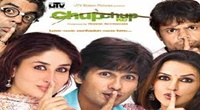
Buddhivantha Full HD Movie Download

Kisna Full HD Movie Download
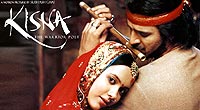
Shadow-The Dark Side of Truth Full HD Movie Download
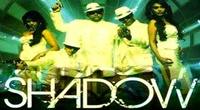
Mujrim Full HD Movie Download
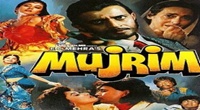
Saggai (1966) Full HD Movie Download
.jpg)
Lorie Full HD Movie Download
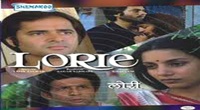
Patthar Ke Insaan Full HD Movie Download

Jaan Tere Naam Full HD Movie Download
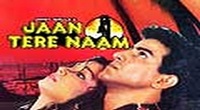
Paisa Ya Pyar Full HD Movie Download
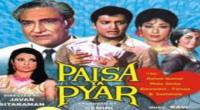
Chor Machaye Shor (1974) Full HD Movie Download
.jpg)
Rajkumar Full HD Movie Download
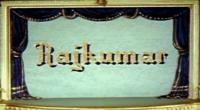
Addhuri: Achhu-Rachchu Love Story Full HD Movie Download
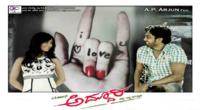
Rojavanam Full HD Movie Download

Aaj Ka Naya Yelgaar Full HD Movie Download

Cats and Dogs Full HD Movie Download
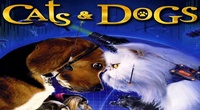
Alexander Full HD Movie Download

Bangaru Kanuka Full HD Movie Download
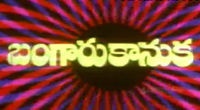
Malli Inkokkasari Full HD Movie Download
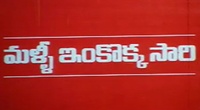
Bhakta Pothana Full HD Movie Download
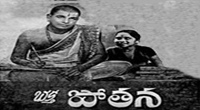
Sawaal (1982) Full HD Movie Download
.jpg)
Download latest Movie from bollywood
- 1> baaghi 3
- 2> THE SKY IS PINK MOVIE FULL STORY AND REVIEW
- 3> Luka Chuppi
- 4> TO ALL THE BOYS I’VE LOVED BEFORE
- 5> Kabir Singh
- 6> Street Dancer 3D
- 7> Simmba
- 8> Gone Girl
- 9> The Girl Who Lived
- 10> Ludo
- 11> DILWALE DULHANIA LE JAYENGE
- 12> GUILTY
- 13> The Godfather
- 14> Adventures of Rusty
- 15> Sooryavanshi
- 16> Satyameva Jayate 2
- 17> Thappad
- 18> Bhool Bhulaiyaa 2
- 19> KGFChapter 2
- 20> Mardaani 2
- 21> Pinjar
- 22> Shivaji maharaj
- 23> Ek Villian 2
- 24> Hungama 2
- 25> Divergent
- 26> Mumbai Saga
- 27> The Internship
- 28> HIT (telugu)
- 29> Panga
- 30> The perfect date
- 31> 16 December
- 32> Gopala Gopala (Telugu)
- 33> Brahmastra
- 34> Gangubai Kathiawadi
- 35> Manmadhudu
- 36> Nenu local
- 37> Mahanati
- 38> Shatamanam bavathi
- 39> Lagaan
- 40> After
- 41> MOM
- 42> Shamshera
- 43> Raguvaran BTech
- 44> Khakee
- 45> The villain
- 46> OM
- 47> Mr. perfect
- 48> Bueatifull mind
- 49> Hichki
- 50> Gabbar Singh
- 51> Jogi
- 52> Before Sunrise
- 53> Before Sunset
- 54> Before Midnight
- 55> The Big Bull
- 56> Top Gun: Maverick
- 57> The Purge
- 58> The Sky is Pink
- 59> Laxmmi Bomb
- 60> Sadak 2
- 61> Sufna
- 62> Prithviraj
- 63> PK
- 64> Coolie No 1(2020)
- 65> Black Widow
- 66> Dear Zindagi
- 67> Dil Bechara
- 68> PHIR HERA PHERI
- 69> WAR
- 70> Dostana
- 71> RRR: Roudram Ranam Rudhiram
- 72> Maidan
- 73> Dabbang 3
- 74> Chhalaang
- 75> life as we know it
- 76> SherShaah
- 77> Sandeep Aur Pinky Faraar
- 78> Event Horizon
- 79> 83
- 80> Radhe: Your Most Wanted Bhai
- 81> Gunjan Saxena: The Kargil Girl
- 82> Mr India
- 83> Vivah
- 84> Anokha Bandhan
- 85> Ghost
- 86> Bhoot: Part One - The Haunted Ship
- 87> Haseen Dilruba
- 88> Laal Singh Chaddha
- 89> Qismat
- 90> Rajput
- 91> Drive
- 92> Dil Chahta Hai
- 93> Dil Ki Baazi
- 94> Dil Ka Rishta
- 95> Teesri Manzil
- 96> Dil
- 97> Love Aaj Kal
- 98> Khaali Peeli
- 99> Bunty Aur Babli 2
- 100> Atrangi Re
- 101> Gulabo Sitabo
- 102> Jodi
- 103> Suraj Pe Mangal Bhari
- 104> Deewana
- 105> Attack
- 106> Sardar Udham Singh
- 107> Toofan
- 108> THE LOVEBIRDS
- 109> Jersey
- 110> Ginny Weds Sunny
- 111> Thalaivi
- 112> Shiddat
- 113> Angels vs Zombies
- 114> Koi Mil Gya
- 115> Thank God
- 116> Bhuj: The Pride of India
- 117> Hum Aapke Hain Kaun
- 118> The Platform
- 119> Bird Box
- 120> Roohi Afzana
- 121> Torbaaz
- 122> Nikamma
- 123> World War Z
- 124> Extraction
- 125> Train to Busan
- 126> Life of Pi
- 127> SHAADI MEIN JROOR AANA
- 128> Himmat Aur Mehnat
- 129> To All The Boys: P.S. I Still Love You
- 130> Mimi
- 131> Good Newwz
- 132> Shubh Mangal Zyada Saavdhan
- 133> Raabta
- 134> Harry Potter and the Philosopher's Stone
- 135> Harry Potter and the Chamber of Secrets
- 136> Chhapaak
- 137> War of the Worlds
- 138> Harry Potter and the Prisoner of Azkaban
- 139> Harry Potter and the Goblet of Fire
- 140> MURDER MYSTERY
- 141> Shakuntala Devi
- 142> Bachchan Pandey
- 143> Jayeshbhai Jordar
- 144> Sheer Qorma
- 145> Saina
- 146> 'O' Pushpa I hate tears
- 147> Kedarnath
- 148> MS Dhoni The Untold Story
- 149> Chhichhore
- 150> Badhaai Ho
- 151> Unstoppable
- 152> Oz the Great And Powerful
- 153> The Girl on the Train
- 154> Haathi Mere Saathi 2020
- 155> The Conjuring: The Devil Made Me Do It
- 156> Gandhi Se Pehle Gandhi
- 157> The Song of Scorpions
- 158> Srimanthudu
- 159> Hello Guru Prema Kosame
- 160> Beauty and The Beast
- 161> Black Panther
- 162> Charlie and the Chocolate Factory
- 163> Bole Chudiyan
- 164> Fidaa
- 165> Duvvada Jagannadham
- 166> Bruce Lee: The Fighter
- 167> Hyper
- 168> Yaara
- 169> Red (2020)
- 170> Shivam
- 171> That Is Mahalakshmi
- 172> Nishabdham
- 173> Aashram 2020 web series
- 174> Laxmii
- 175> Mismatched
- 176> STUDENT OF THE YEAR 2
- 177> NAIL POLISH
- 178> Ramprasad Ki Tehrvi
- 179> KAAGAZ
- 180> 12 o Clock
- 181> The Power
- 182> bolo hau
- 183> Tribhanga
- 184> JAMUN
- 185> Madam Chief Minister
- 186> Maasaab
- 187> Aadhaar
- 188> Tanhaji
- 189> Bhaagi 3
- 190> Bhootnath
- 191> MALANG
- 192> Jai Mummy Di
- 193> Haathi Mere Saathi 2021
- 194> Shakeela
- 195> Unpaused
- 196> Annayya
- 197> Vamsoddharakudu
- 198> Mrugaraju
- 199> Narasimha Naidu
- 200> Sankranti
- 201> Manasu Maata Vinadhu
- 202> Anjaane
- 203> Apaharan
- 204> Bachke Rehna Re Baba
- 205> Bewafaa
- 206> Roohi
- 207> Radhe
- 208> Zindagi Khoobsoorat Hai
- 209> Yeh Mohabbat Hai
- 210> Yeh Kya Ho Raha Hai?
- 211> The Tomorrow War
- 212> DehradunDiary
- 213> Meri Shaadi Karaoo
- 214> Matruu Ki Bijlee Ka Mandola
- 215> No One Killed Jesica
- 216> Aag Ka Goola
- 217> Eight Million Dollars
- 218> Three Hundred
- 219> Cats and Dog
- 220> Decoy
- 221> Gold Rush
- 222> You Have Got Mail
- 223> Final Destination three
- 224> Tofan
- 225> Jungle
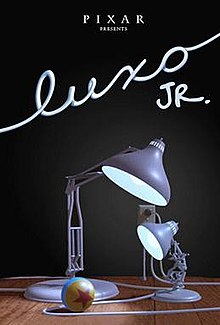 Story of movie Luxo Jr. :
Story of movie Luxo Jr. : 